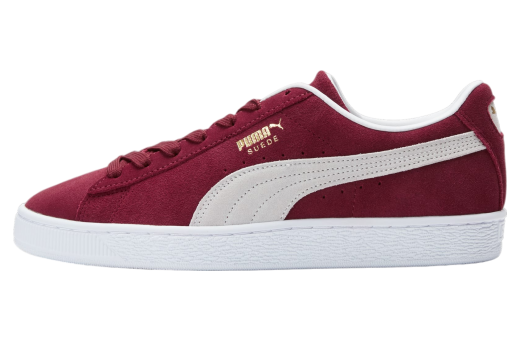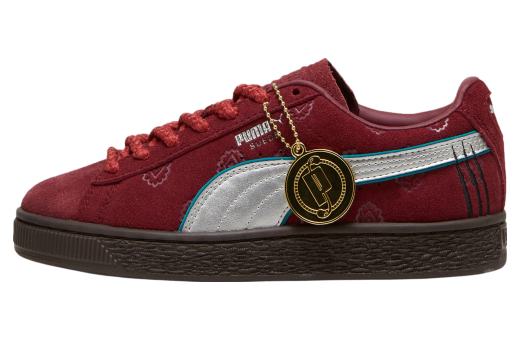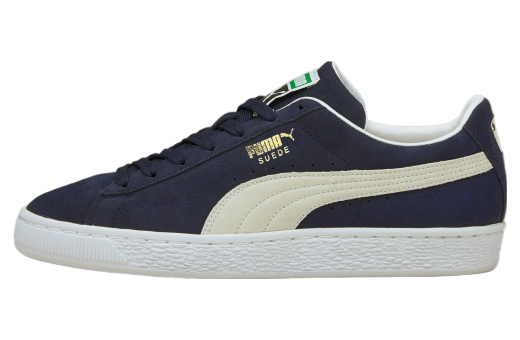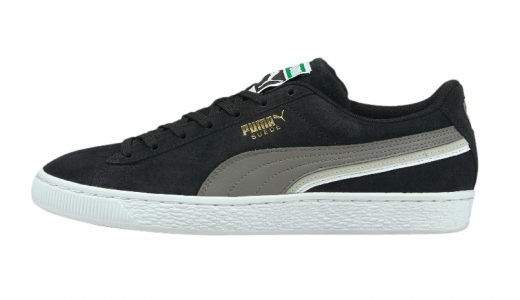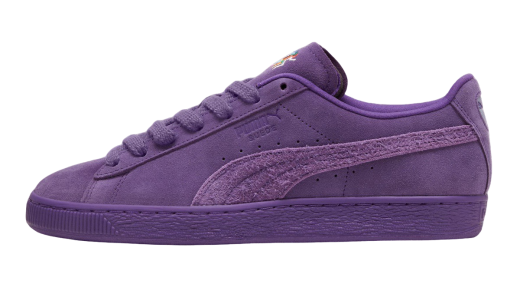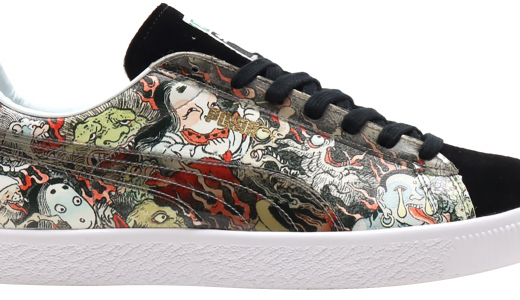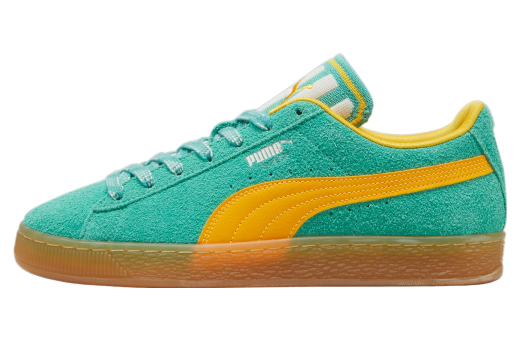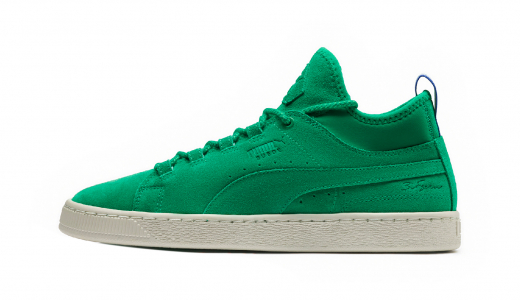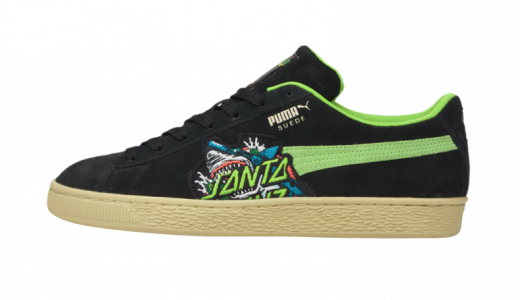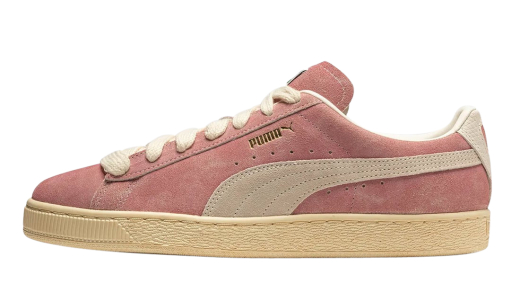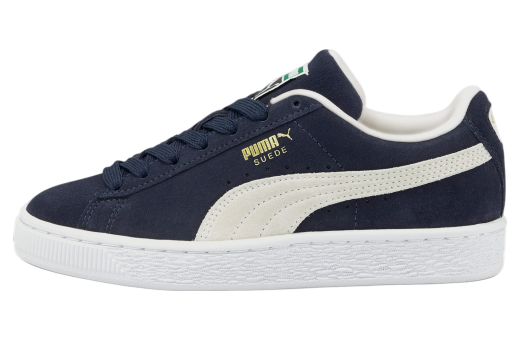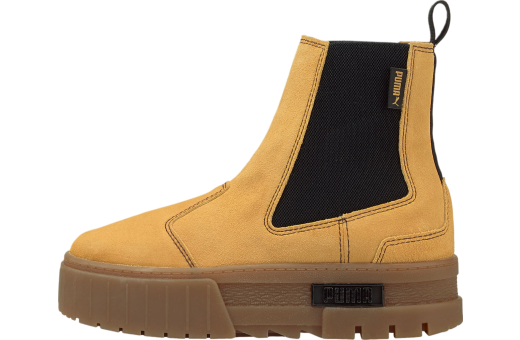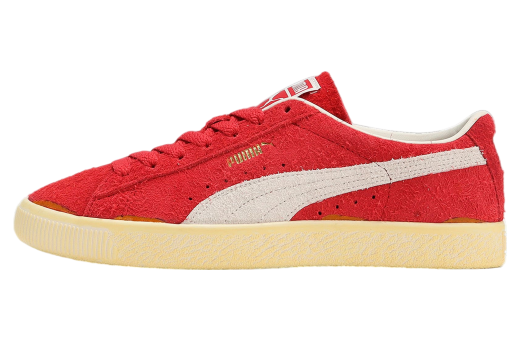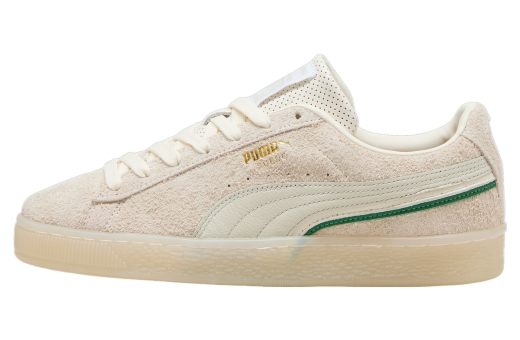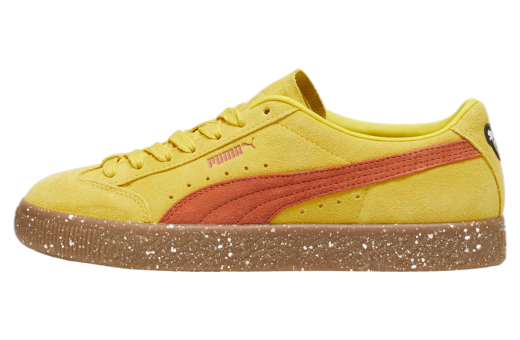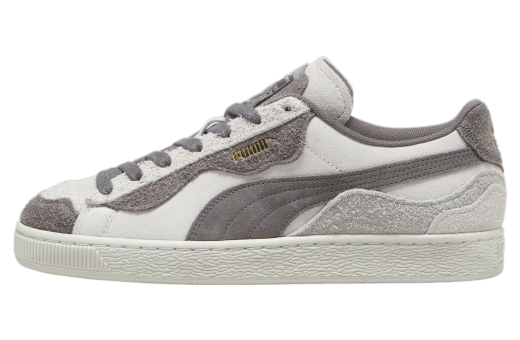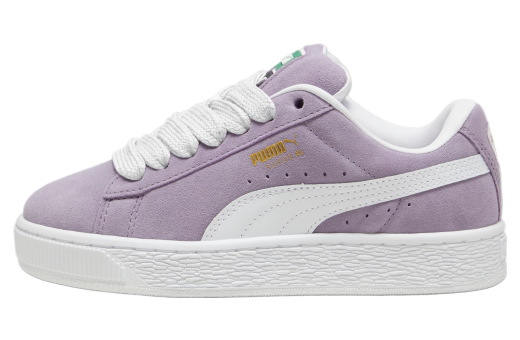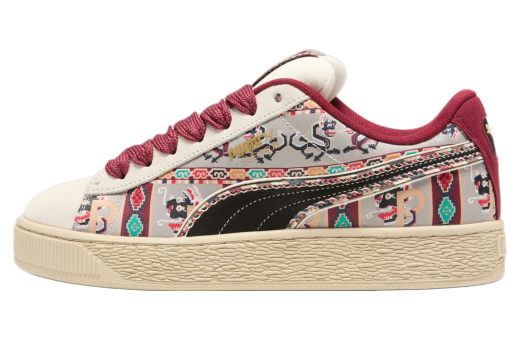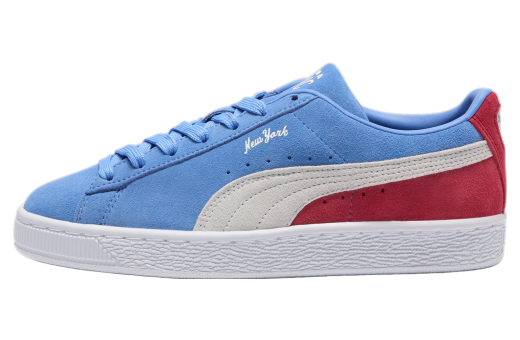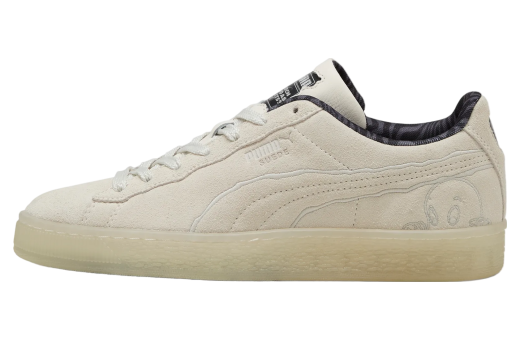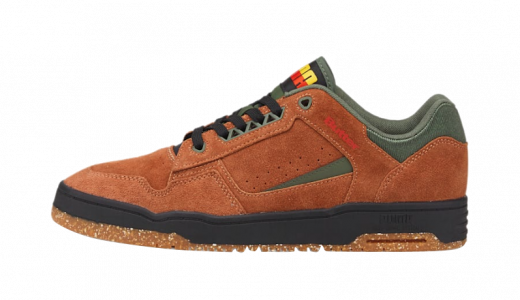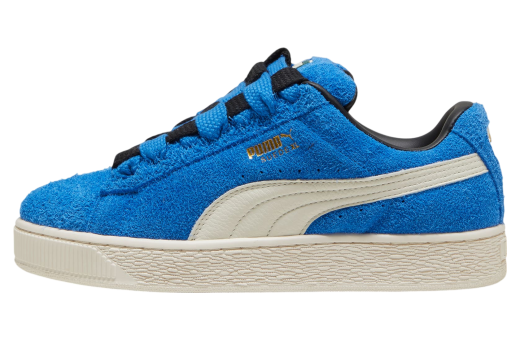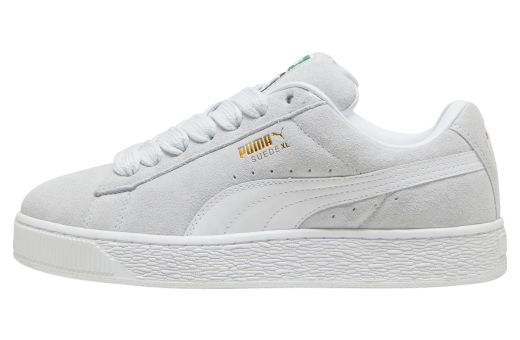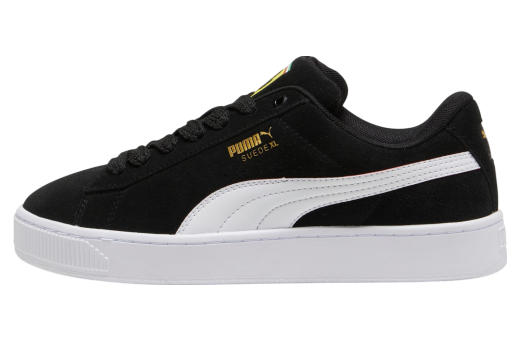Puma Suede
The Puma Suede is an iconic sneaker that has transcended generations and cultural movements since its debut in 1968. Originally conceived as a basketball shoe, it quickly became a symbol of street style, embraced by everyone from breakdancers to hip-hop artists. Its design features a distinctive, low-top silhouette crafted from soft suede material, a rubber sole for traction, and the signature Puma Formstrip on the sides. Available in an array of colors, this versatile sneaker has maintained its allure not just as a functional piece of footwear, but as a cultural artifact that captures the essence of various urban subcultures.
In addition to its influence within the realms of sports and street fashion, the Puma Suede has also been pivotal in numerous collaborations with designers, musicians, and artists, further cementing its status as a timeless classic. Notable limited editions have included partnerships with FUBU, Rihanna's FENTY collection, and a myriad of other influential brands and individuals. These collaborations have not only refreshed the design but also pushed the envelope in terms of creativity and cultural commentary. The Puma Suede’s enduring popularity serves as a testament to its innovative design, comfort, and the seamless way it adapts to the ever-changing landscape of fashion and lifestyle.
History of Puma Suede
The History of Puma Suede: From Sportswear to Streetwear Icon
The Puma Suede is one of those rare footwear icons that has transcended its origins to become a symbol of cultural and stylistic evolution. Since its inception in 1968, the Puma Suede has journeyed through the landscapes of sports, music, and fashion, earning accolades and reinvention along the way. This comprehensive history, spanning over five decades, aims to capture the essence and enduring legacy of the Puma Suede.
The Genesis: A Footwear Revolution
In the late 1960s, sportswear was predominantly characterized by functional but often bland designs. Puma, a German brand founded by Rudolf Dassler in 1948, sought to challenge this norm. In 1968, at the Summer Olympics held in Mexico City, Puma introduced the Suede, a shoe that would break both athletic and cultural barriers.
The Suede was initially launched as a basketball shoe, engineered with a unique, textured rubber sole and a suede upper—a stark departure from the typical canvas or leather used in athletic footwear at that time. This design offered a combination of durability and style that quickly made the Suede a favorite among athletes. The shoe's most iconic moment in sports came when American athlete Tommie Smith wore it during his famous Black Power salute at the Olympic victory podium.
The Rise in Sports
Following its initial success, the Puma Suede quickly became a staple in several sports communities. Basketball players appreciated its grip and cushioning, while track and field athletes praised its comfort and support. The Suede's versatility was not limited to these sports; skateboarders also adopted the shoe for its robust build and great board feel. The Puma Suede effectively crossed the line between performance and leisure, adding to its growing allure.
Interestingly, during the 1970s and 1980s, Puma expanded its product line due to the growing demand for stylish athletic footwear. The brand became synonymous with some of the era's greatest athletes. The Suede model saw several reissues and updates to meet the functional needs of contemporary sports while maintaining its characteristic design.
The Hip-Hop Connection
The 1980s marked a significant transformation for the Puma Suede, as it found a new and passionate audience in the burgeoning hip-hop culture. Known for its expressive style and rich suede texture, the Suede became a staple among breakdancers and graffiti artists. The shoe was lightweight, durable, and stylish, making it perfect for the dynamic and physically demanding elements of hip-hop dance.
New York City, often regarded as the birthplace of hip-hop, saw the Puma Suede rise to fame as the shoe of choice for crews like the Rock Steady Crew. The colorful designs and mix-and-match fashion of the hip-hop culture allowed the Suede to become a canvas for self-expression. This period saw Puma release more vibrant colorways and limited editions, aligning perfectly with the eclectic style of the hip-hop community.
Crossing Into Mainstream Fashion
By the 1990s, the Puma Suede had cemented its position not just in sports and hip-hop but in mainstream fashion. The grunge and skateboarding scenes of the '90s also embraced the Suede, as its rugged build and distinctive look fit well with their aesthetic. Retailers began featuring the shoe more prominently, and it became a common sight both on the streets and in fashion magazines.
Collaborations played a significant role in the Suede's transition into high fashion. Designers and brands frequently collaborated with Puma to produce limited-edition versions of the Suede, each brimming with unique flair. Whether through exclusive colorways, special materials, or unique branding, these collaborations brought new life to the classic model while preserving its core identity.
Celebrity Endorsements and Collaborations
As the new millennium dawned, the influence of the Puma Suede continued to grow, buoyed by numerous celebrity endorsements and high-profile collaborations. Artists and fashion influencers such as Jay-Z, Rihanna, and Kylie Jenner were frequently seen sporting the iconic shoes, bringing them into the limelight for a new generation.
Rihanna’s partnership with Puma in 2014, particularly with her Fenty line, led to a renaissance for the brand. The introduction of modern, edgy, and high-fashion elements, combined with the timeless appeal of the Suede, resulted in an unprecedented surge in its popularity. Limited-edition runs sold out almost instantly, reaffirming the Suede's status as a sneaker culture icon.
Technological and Environmental Innovations
While staying true to its iconic design, the Puma Suede has also adapted to contemporary demands and innovations. In the 2010s, Puma began to experiment with eco-friendly materials and manufacturing processes. The Suede model saw releases featuring organic and recycled materials, positioning the shoe in line with the growing global emphasis on sustainability.
Furthermore, advancements in footwear technology were seamlessly integrated into the Suede’s classic design. Innovations in cushioning, sole construction, and material durability have ensured that the Suede remains as cutting-edge today as it was over five decades ago.
A Cultural Staple Across Continents
The Puma Suede's appeal is not confined to any single geography or demographic. From the basketball courts of the United States to the hip-hop stages in Europe and the urban streets of Asia, the Suede has found a global audience. Its ability to transcend cultural barriers is a testament to its versatile design and universal appeal.
In Japan, for instance, sneaker culture has long been venerated, and the Puma Suede holds a prestigious position. Japanese youth embraced the Suede in the 1980s and '90s, and even today, limited-edition releases and collaborations with Japanese brands are highly sought after. Similarly, in Europe, the sneaker culture's blend of sports influence and street style has kept the Suede in constant demand.
Legacy and Influence
Fifty years on, the Puma Suede remains as relevant and beloved as ever. Its influence is clearly evident in the design cues borrowed by other brands and in the ongoing popularity of suede as a material choice in sneakers. Its ability to stay current while remaining faithful to its roots speaks volumes about its design and the philosophy behind it.
The Suede's evolution is also a reflection of Puma’s adaptability and foresight. The brand has navigated through the turbulent waters of changing fashions, technological advancements, and shifting consumer preferences, yet managed to keep the Suede front and center.
The Puma Suede stands as a unique example in the annals of footwear history. It represents not only a shoe but a legacy of athletic excellence, cultural integration, and fashion-forward thinking. From its origins on the sports field to its iconic status in the worlds of music, dance, and fashion, the Suede has continually reinvented itself while maintaining its classic allure.
As we move further into the 21st century, the Puma Suede is likely to continue its journey, influencing and shaping cultural trends worldwide. Its story is far from over, and if history is any indication, the Puma Suede will remain a staple in wardrobes and a symbol of enduring style for generations to come. ```
